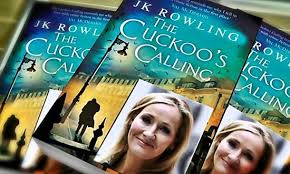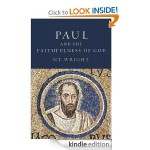It might be thought that after the hugely successful Harry Potter novels, J.K. Rowling would be content to rest on her laurels (not to mention her millions), and put the pen back in the ink well for a while. Not a bit of it! She has now assumed a nom de plume of Robert Galbraith, and is writing whodunnits, or murder mysteries, or crime thrillers, call them what you will. Thus far, two books have come out in this series—- The Cuckoo’s Calling (2013—550 pages), and The Silk Worm (2014—455 pages), with promise of more. Time for an assessment of her foray into this genre of fiction. The first novel came out, and became a success in the U.K., before it became known that Rowling was in fact the author. Perhaps Rowling wanted to see if success was possible without the clout of her name attached to the book. She need not have worried about that. She writes well.
First of all, I will say that I enjoyed reading both these novels this past summer. They served as my beach reading, and I found them ‘ a pleasant fiction’ to use a phrase from the Bard. The strength of these novels is in their two central characters (the sleuths) Cormoran Strike, and Robin Ellacott, (think Holmes and Watson in the CBS series Elementary). Strike is ex-Army, and lost a leg in Afghanistan. Ellacott is an engaged and engaging bright young lady who is looking for her place in the working world of London, and has always wanted to do something that involved detection, solving puzzles and sorting out human dilemmas. While not quite the odd couple, they certainly makes for an interesting pair, and there is tension in the relationship not least because Strike finds Ellacott attractive, and he has just come off being dumped by his long time girl (a blonde bombshell named Charlotte). In these two novels we see Ellacott grow into a vital role, including drawing close inferences from keen observations, and gradually she becomes indispensible to Strike’s work, not least because of his physical limitations. These characters are interesting, likable, and sometimes eccentric. They are far from boring.
The setting of these novels is London in the 21rst century, and Rowling clearly has good powers of description, though she is no match for P.D. James when it comes to setting a mood, or eloquently describing a scene, or for that matter, making your skin crawl. In fact one might say that there is too much description in these novels, and too little action. Think of a kettle full of water, set on low….. one keeps waiting and waiting and waiting for the darn thing to boil over, and the action to pick up. This is especially the case with the first of these novels. The second novel is decidedly better at plotting and including more action than the first, not least because it takes 100 pages less to get to the ‘reveal’ near the end of the novel, and the big finish. If you like Grisham, these novels will try your patience due to their lack of obvious action along the way. If the goal was to show us that most detection involves a myriad of humdrum and rather dull activities, then Rowling succeeded in depicting this. As for me, I kept wanting to say— ‘oh come on, let’s get on with it’.
Macabre murders make for interesting detective work, especially if you are not sure it is murder in the first place. One of the things about Cormoran Strike which makes him rather like Holmes is his attention to detail, seeing key clues in the details. And so you are invited to think along with Strike, or at least to wonder how he is assembling the pieces in his brain. Rowling is a skillful enough writer to not tip her hand before nearly the end, and so the curiosity factor keeps one reading, and guessing along with Strike. Who indeed murdered the fashion model Lula Landry, and how exactly did Owen Quine, an author, come to be gruesomely disemboweled in a ritual killing that can only be called bizarre? The crimes are interesting enough, and out of the ordinary enough to attract our attention. But unlike P.D. James, Rowling does not seem to be interested in painting her story lines against the backdrop of larger issues such as Good vs. Evil, or the angelic vs. the demonic. In this regard, her crime fiction is more like that if Ian Rankin’s and a bit less like that of Susan Hill who has some positive Christian characters in her novels.
Would I recommend these new novels of Rowling? Yes I would, however a fair warning to parents— there is plenty of bad language in these novels (particularly the F word), and there are detailed descriptions of gruesome things at a few points. This is not children’s literature, it is for adults who like solving abstruse puzzles, and thinking along with detectives. I for one do look forward to the further adventures of Batman and Robin….. err, Cormoran and Robin. They making for an interesting team.














